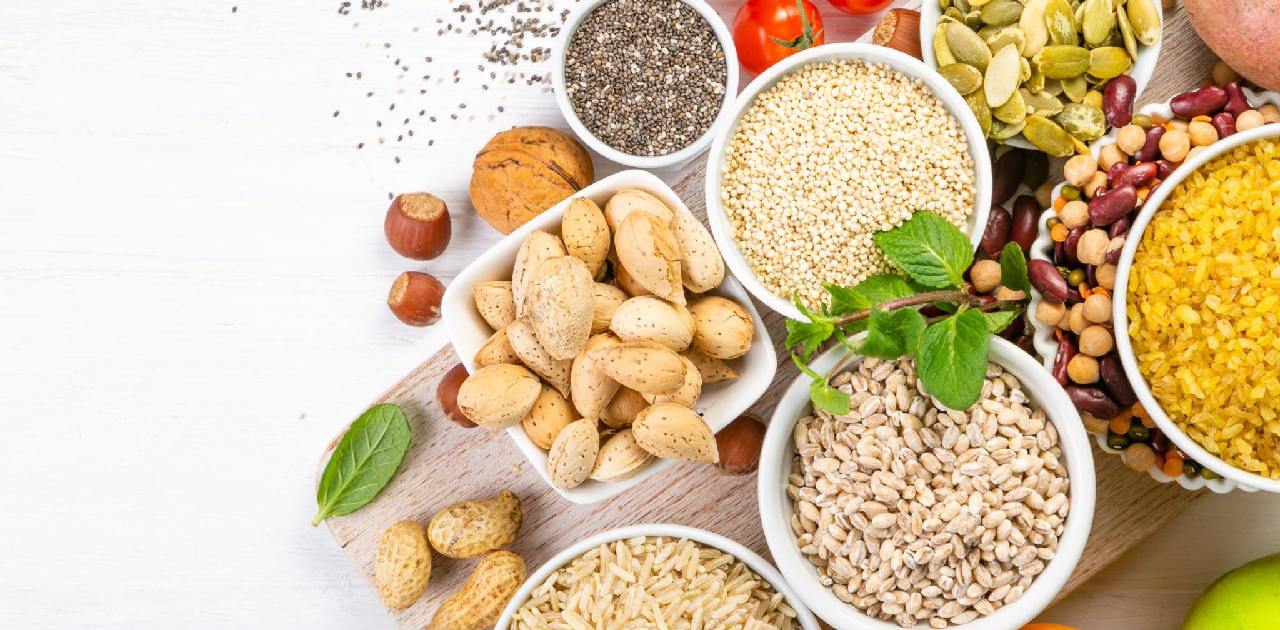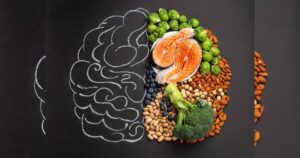Are you looking for ways to improve your overall health and well-being? One simple step you can take is to incorporate more low-fat foods into your diet. Low-fat foods have numerous benefits for your body, including weight loss, improved heart health, and reduced risk of chronic diseases. In this article, we will delve into the benefits of low-fat foods, the types of low-fat foods you can eat, and how to incorporate them into your daily diet.
Introduction to Low-Fat Foods
Low-fat foods are those that contain a smaller percentage of fat compared to their overall calorie content. These types of foods are rich in essential nutrients such as vitamins, minerals, and fiber, making them an ideal choice for anyone looking to improve their overall health.
Low-fat foods are commonly found in plant-based foods such as fruits, vegetables, whole grains, and legumes. These foods are often naturally low in fat and high in fiber and other nutrients, making them an excellent choice for anyone looking to reduce their intake of high-fat foods.
Why are Low-Fat Foods Important for Your Health?
Low-fat foods are essential for your health because they offer numerous benefits for your body. Not only do low-fat foods help you lose weight, but they can also improve your heart health, reduce your risk of chronic diseases, and improve your overall well-being.
One of the primary benefits of low-fat foods is weight loss. Since these foods are lower in calories than high-fat foods, they can help you achieve and maintain a healthy weight. Additionally, low-fat foods are rich in fiber, which can help you feel fuller for longer periods, reducing your overall calorie intake.
Low-fat foods are also essential for maintaining heart health. High-fat diets can contribute to the development of heart disease, while low-fat diets have been shown to reduce the risk of heart disease. Incorporating low-fat foods into your diet can help you maintain healthy cholesterol levels and reduce your risk of heart disease.
Types of Low-Fat Foods
There are various types of low-fat foods that you can incorporate into your diet. Some of the most common low-fat foods include:
Fruits and Vegetables
Fruits and vegetables are excellent sources of low-fat foods. They are naturally low in fat and calories, making them an ideal choice for anyone looking to reduce their intake of high-fat foods. Additionally, fruits and vegetables are rich in vitamins, minerals, and fiber, making them essential for maintaining overall health.
Whole Grains
Whole grains are rich in fiber and other essential nutrients, making them an excellent choice for anyone looking to maintain a healthy weight. Some of the most common whole grains include brown rice, whole wheat, oats, and barley.
Legumes
Legumes are also excellent sources of low-fat foods. They are rich in protein, fiber, and other essential nutrients, making them an ideal choice for anyone looking to maintain a healthy weight. Some of the most common legumes include lentils, chickpeas, and black beans.
Low-Fat Diets and Weight Loss
Low-fat diets have been shown to be effective in weight loss. By reducing your overall intake of high-fat foods and incorporating more low-fat foods into your diet, you can achieve and maintain a healthy weight.
Additionally, low-fat diets have been shown to reduce the risk of chronic diseases such as heart disease and diabetes. By incorporating more low-fat foods into your diet, you can improve your overall health and reduce your risk of chronic diseases.
How to Incorporate Low-Fat Foods into Your Diet
Incorporating low-fat foods into your daily diet is simple and easy. Some of the best ways to incorporate these foods into your diet include:
Low-Fat Food Swaps
One of the easiest ways to incorporate more low-fat foods into your diet is by making simple food swaps. For example, you can swap high-fat dairy products such as cheese and butter for low-fat options such as skim milk and low-fat yogurt.
Low-Fat Recipes
There are numerous low-fat recipes available that you can try. These recipes are often simple and easy to make, making them an ideal choice for anyone looking to incorporate more low-fat foods into their diet.
Shopping for Low-Fat Foods
When shopping for low-fat foods, it is essential to read labels carefully to ensure that you are purchasing foods that are low in fat. Look for foods that are labeled as low-fat or fat-free, and avoid foods that contain high amounts of saturated and trans fats.
The Downsides of Low-Fat Foods
While low-fat foods offer numerous benefits for your body, there are some downsides to consider. For example, some low-fat foods may contain added sugars and other unhealthy ingredients to improve their taste.
Additionally, some low-fat diets may be too restrictive, leading to nutrient deficiencies and other health problems. It is essential to work with a healthcare professional to develop a healthy and balanced diet that meets your individual needs.
Frequently Asked Questions About Low-Fat Foods
What are low fat foods?
Low fat foods are those that contain lower amounts of fat compared to their regular counterparts. They are typically recommended for individuals who are trying to reduce their overall fat intake as part of a healthy diet or to manage certain health conditions.
Why should I consume low fat foods?
Consuming low fat foods can be beneficial for various reasons. Lowering your fat intake can help you manage your weight, as fat is higher in calories compared to other nutrients. It may also help reduce your risk of certain health conditions, such as heart disease and high cholesterol levels.
What are some examples of low fat foods?
Some examples of low fat foods include:
- Fruits and vegetables: Most fruits and vegetables are naturally low in fat and calories, making them great options for a low fat diet.
- Lean proteins: Skinless poultry, fish, beans, lentils, and tofu are good sources of low fat protein.
- Dairy products: Choose low fat or fat-free options for milk, yogurt, and cheese.
- Whole grains: Opt for whole grain breads, cereals, pasta, and rice, which are typically lower in fat compared to refined grains.
- Legumes: Beans, lentils, and chickpeas are high in fiber and protein, while being relatively low in fat.
- Egg whites: Egg whites are low in fat and cholesterol compared to whole eggs.
- Low fat condiments: Choose low fat or fat-free dressings, sauces, and spreads to reduce your fat intake.
Can I still eat fats on a low fat diet?
Yes, it’s important to note that not all fats are bad. In fact, some fats are essential for good health. It’s about choosing the right types of fats in moderation. Unsaturated fats, such as those found in nuts, seeds, avocados, and fatty fish like salmon, are considered healthy fats and can be included in a low fat diet.
How can I reduce the fat content in my meals?
Here are some tips for reducing the fat content in your meals:
- Choose lean cuts of meat and remove visible fat before cooking.
- Bake, grill, or steam your food instead of frying.
- Use cooking oils sparingly and opt for healthier options like olive oil or canola oil.
- Use non-stick cookware to reduce the need for added fats.
- Choose low fat or fat-free dairy products.
- Add more fruits and vegetables to your meals to increase fiber and reduce overall fat intake.
- Limit consumption of processed and high-fat foods like fast food, fried snacks, and desserts.
Are all low fat foods healthy?
Not necessarily. While low fat foods may contain less fat compared to regular versions, they may still be high in sugar, sodium, or other unhealthy ingredients. It’s important to read food labels and choose whole, minimally processed foods whenever possible. A balanced, nutrient-rich diet that includes a variety of foods is always the best approach for optimal health.
Is a low fat diet suitable for everyone?
A low fat diet may be suitable for some individuals, such as those who are trying to manage their weight, reduce their risk of certain health conditions, or as part of a medical recommendation. However, it may not be appropriate for everyone. It’s important to consult with a healthcare professional or a registered dietitian before making any significant changes to your diet, especially if you have any underlying health conditions or dietary restrictions. They can provide personalized recommendations based on your individual needs and health goals.
Conclusion – The Benefits of a Low-Fat Diet
In conclusion, incorporating more low-fat foods into your daily diet can offer numerous benefits for your body. These foods can help you achieve and maintain a healthy weight, reduce your risk of chronic diseases, and improve your overall well-being.
When incorporating low-fat foods into your diet, it is essential to make simple food swaps, try new low-fat recipes, and read labels carefully when shopping for food. By following these tips, you can easily incorporate more low-fat foods into your daily diet and experience the numerous benefits they offer.






